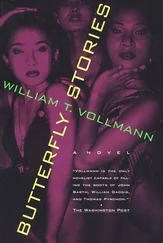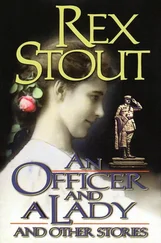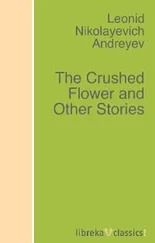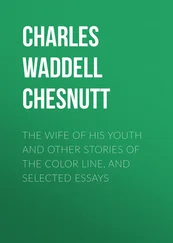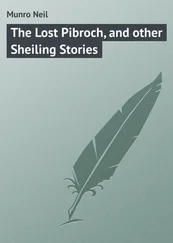Visual reckoning method when entering Veracruz Harbor— “In the old days navigators got into Vera Cruz by the picturesque means of steering so that the tower of the Church of San Francisco covered the tower of the cathedral… How the vast, shining wealth of Mexico poured into Europe through this port… [!]”— Edith O’Shaughnessy [Mrs. Nelson O’Shaughnessy], Diplomatic Days (New York: Harper & Brothers, 1917), p. 12.
The Marqueses del Valle were Cortés’s descendants, and for some years they ran the port of Veracruz.
Miscellaneous descriptions of Cempoala, the Casa de Cortés and Veracruz generally, including of the “haunted” houses (which were in fact pointed out to me as such)— From notes taken during that same visit in 2011.
The life and goddess-avatars of Malinche— Information from Anna Lanyon, Malinche’s Conquest (Crows Nest, Australia: Allen & Unwin, 1999).
Doña Marina’s statement that “ she would rather serve her husband and Cortés than anything else in the world ”— Bernal Díaz del Castillo, The Discovery and Conquest of Mexico 1517–1521, ed. Genaro García, trans. A. P. Maudslay (New York: Farrar, Straus & Cudahy, 1956), p. 68. This is another translation of the Díaz text cited earlier.
Legends about La Llorona and other ghosts in Veracruz— From stories told to me by taxi drivers, etcetera, in 2011. Here is a fine one: A driver said that once he was driving to Cardel in his taxi and he saw a woman in a white dress standing at the edge of the road. She waved him down and asked him to give her a ride, all the while keeping her face hidden from him. La Llorona was frequently spoken of in these parts. She was said to wear a long white dress. She had long black hair down to her ankles and a horrible horse’s head. So the driver drove past the strange woman, who was likewise dressed in white, then made a U-turn in hopes of seeing her from the front. At once she disappeared. — “What would she do if you’d said: Oh, you’re so beautiful! and kissed her face?”— “The man would die at once,” he said, bored. “Did you ever see the ghost of Malinche or Cortés?”— “Not around here.”— “What about the old gods?”— “Not in this zone. But up at Cempoala, if you go into the ruins, there’s a big circle of stones, and if you stand at the middle of the circle and stare into the sun, the sun god’s energy will pour into you and cure all your problems.”
The castle— I asked a man about ghosts, and he said: “Oh, yes, La Llorona can be heard in the castle. At three or four in the morning, you can see swings moving in this playground, if no one is there. You can feel them coming out to follow you. There are other presences in other buildings, but the castle is the worst.”
Description of La Llorona after Ricardo feeds her the jade bead— After an illustration in Rubén Morante López, A Guided Tour: Xalapa Museum of Anthropology, trans. Irene Marquina (Xalapa: Gobierno del Estado de Veracuz de Ignacio de la Llave y Universidad Veracruzana, 2004), p. 147.
The golden parting gifts from La Llorona— Based on real Aztec goldwork on display in the Baluarte. Ordinarily they would have been melted down by the Spaniards, but the galleon sank. An octopus fisherman found them in a wreck, and went to jail for not disclosing them.
TWO KINGS IN ZIÑOGAVA
Epigraph: “But what does the social order do…?”— Jan Potocki, The Manuscript Found in Saragosa, trans. Ian Maclean (New York: Penguin Classics, 1996 repr. of 1995 ed.; orig. French ms. ca. 1812), p. 517.
Common Spanish reference ( ca. 1625) to an elegant, white-dressed black woman as a mosca en leche, a “fly in milk”— Herman L. Bennett, Africans in Colonial Mexico: Absolutism, Christianity, and Afro-Creole Consciousness, 1570–1640 (Bloomington: Indiana University Press, 2003), p. 19.
A few details of religious coercion and sacramental fees are taken (perhaps not entirely accurately, since Veracruz is not in the valley of Mexico) from Charles Gibson, The Aztecs Under Spanish Rule: A History of the Indians of the Valley of Mexico 1519–1810 (Stanford, CA: Stanford University Press, 1964). Some descriptions of masters’ and mistresses’ cruelty to slaves are derived from period woodcuts reproduced in Benjamin Nuñez, with the assistance of the African Bibliographic Center, Dictionary of Afro-Latin American Civilization (Westport, CT: Greenwood Press, 1980).
Description of the aventurine cask— From information in the Condesa de Galve, p. 143. Aventurine was a kind of glass containing scintillating particles.
Description and history of San Juan de Ulúa— After a visit there in 2011, and information from Teresa del Rosario Ceballos y Lizama, Una visita al pasado de San Juan de Ulúa [contains abbreviated English trans.] (Veracruz?: self-published? 2010). For the legends of Chucho el Roto and the Mulata de Córdoba, see p. 69. In English the island’s name is often spelled “Ulloa.”
“ Mestiza, goddess of the orient…”— Frenk, p. 376 (5182, estrofa suelta, trans. by Teresa McFarland and WTV).
Franciscan desire to create a Kingdom of the Gospels in Mexico— Alicia Hernández Chávez, Mexico: A Brief History, trans. Andy Klatt (Berkeley: University of California Press, 2006; orig. Spanish-lang. ed. 2000), p. 38.
“Stretch out your arms, negrita …”— Invented by WTV.
Benito Juárez: “I know that the rich and the powerful…” — Smart, p. 355 (said in 1865).
The Blue Range in Moquí Province (believed in from end of seventeenth century until the nineteenth)— Luis Weckmann, of the Mexican Academy of History, The Medieval Heritage of Mexico, trans. Frances M. López-Morillas (New York: Fordham University Press, 1992), p. 39.
The Amazon of Ziñogava; characteristics of Amazons; claim of the Tarascans— Ibid., pp. 51, 49.
The skeleton hand— A not entirely uncommon Gothic element. For instance, I once read an English tale about a woman who was murdered by a rejected suitor on her wedding night. No one could prove anything against the man; the body had disappeared, and so had he. Her skeleton was found years later; her sister asked that the hand be cut off, in case it could bring about justice. One day the murderer came into the bar where it was displayed (yes, in a velvet-lined glass box, although in this version the velvet was black, not red, which I thought better for a Mexican setting), stared at it in horror, approached the glass box, touched it, and blood appeared on his fingers.
The crocodile “bullfights” of Dorantes de Carranza ( ca. 1593)— Weckmann, p. 122.
“Much do I care for my María…”— Frenk, p. 121 (3636, “¡Ay! qué diantre de María,” trans. by WTV).
The head’s magic power— This may not touch your belief, but in 2011 I saw for myself how some pyramidal little tugboat could pull a long, many-smokestacked Rickmers freighter right past San Juan de Ulúa and out of Veracruz Harbor without seeming effort.
First arrival of Cortés at San Juan de Ulúa— Bernal Díaz, The Conquest of New Spain, p. 69. On the next page this conquistador describes the future site of Veracruz as “no level land, nothing but sand-dunes.”
Colors and significances of ancient Mexica directions— Zarur and Lovell, pp. 98–99.
“they are dead; they will not live…” — Isaiah 26:14.
Description of the Queen with “her eyes squinted shut like a corpse’s”— After an illustration in López, p. 153. “The closed eyes and the open mouth of this female figure indicate that she is dead.”
The two fountains of Huasteca and the magic mountain with the petrifying river— Weckmann, pp. 40, 39.
Читать дальше

